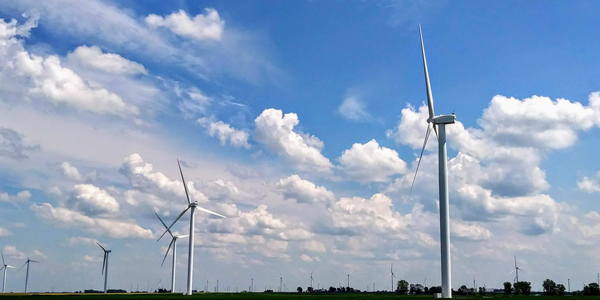By Amanda Durish Cook
MISO will conduct a study to identify the challenges of integrating growing volumes of renewable generation in its footprint.
The open-ended, multiyear study will be used to “facilitate a broader conversation about renewable energy-driven impacts on the reliability of the electric system,” MISO said.
“We trying to look at the impacts over a much broader period of renewable penetration and quantify the impacts,” said Jordan Bakke, of the RTO’s policy studies group, at an Aug. 16 Planning Advisory Committee meeting. “If we look over the last decade of MISO, we started at very minimal [renewable] penetration … and we’ve grown quite steadily over that time frame.”
Different types of renewables are growing at different rates throughout the MISO regions, Bakke said, and the RTO wants to identify “inflection points” at which the growth of renewables and the retirement of baseload units will require changes in the structure or operation of the system. With more projects moving through the interconnection queue, Bakke said MISO may soon have to begin forecasting for solar output.
The study aims to predict how and when reliability will be impacted under heavy renewable output; if there are limits to the amount of wind and solar generation MISO can support; how long before energy storage becomes a requirement; what parts of the grid will be stressed first; and how much renewable energy can be deployed before significant system changes are needed.
“We don’t have a great idea of when certain things will have to take place to integrate renewable generation. We don’t know at what mix that will have to take place,” Bakke said.
MISO’s current registered wind capacity is about 16.8 GW and current registered solar capacity is about 180 MW, but those figures could pale in comparison if all the prospective projects in its generation interconnection queue are realized. The RTO currently has about 31 GW of wind capacity and 15.7 GW of solar capacity advancing through various stages of the queue.
After some stakeholders cautioned MISO not to inhibit state jurisdiction over resource adequacy or renewable portfolio standards, staff stressed that the study will be limited to an impact assessment, and nothing will be built or changed as a direct result of the study.
“We’re looking purely at the technical impacts of the system, and how those can change,” Bakke said, adding that if something significant is discovered, study results will be passed to other departments.
Some stakeholders demanded to know if the study results would eventually inform modeling in MISO’s annual Transmission Expansion Plan.
“It really depends. It’s an exploratory study, and that’s the nature of research,” Bakke said.
Wind on the Wires’ Natalie McIntire asked how this study would differ from other renewable studies the U.S. Energy Department has already conducted.
Bakke said that while national studies seek ways to incorporate targeted amounts of renewables, MISO’s study will lack “a solution-oriented focus.”
Indianapolis Power and Light’s Lin Franks offered to share the company’s data on its solar assets and Harding Street storage facility. “We’ve been trying to get MISO’s attention now for a while to provide real PV data,” Franks said. “We need to bring real data to the table before engaging in a worthless academic exercise.”
Bakke agreed that renewable data for the footprint is hard to come by and said MISO may use IPL’s data.
The RTO will return to the PAC in September with a study scope for stakeholders to review, he said.




